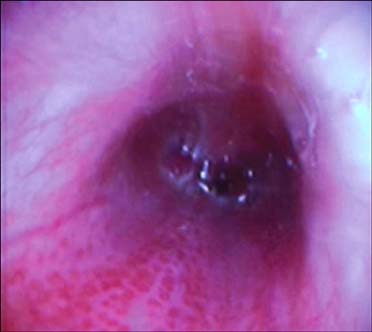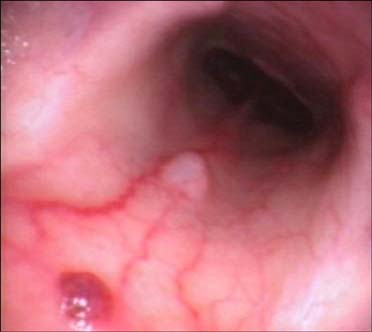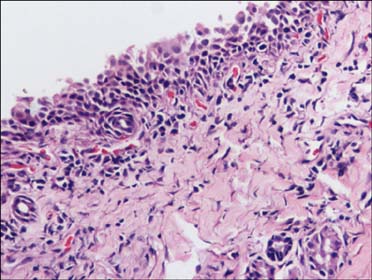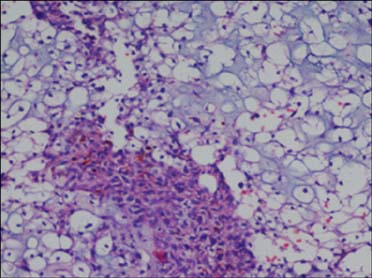J Vet Sci.
2010 Sep;11(3):249-255. 10.4142/jvs.2010.11.3.249.
Clinical findings, rhinoscopy and histological evaluation of 54 dogs with chronic nasal disease
- Affiliations
-
- 1Department of Veterinary Clinical Science, University of Bologna, Italy.
- 2Department of Veterinary Public Health and Animal Pathology, University of Bologna, Italy.
- 3Department of Experimental and Clinical Medicine, University of Catanzaro, Italy. spinella@unicz.it
- KMID: 1093500
- DOI: http://doi.org/10.4142/jvs.2010.11.3.249
Abstract
- Nasal diseases are very common in dogs and rhinoscopy is often required for a definitive diagnosis. Rhinoscopy, while superficial in nature, can guide the clinician to the final diagnosis. In this study, rhinoscopy was performed on 54 dogs with symptoms of chronic nasopharyngeal disease. The endoscopic diagnosis of neoplasia or chronic nasal inflammation was validated with histological examination of pathological samples, in order to evaluate the degree of concordance between endoscopic findings and histological diagnosis. The agreement between endoscopy and histology was tested by application of Cohen's kappa coefficient. We conclude that correlation between endoscopic results and histological diagnosis, expressed by a Cohen's kappa coefficient of 0.73, is only possible with a constant cooperation between the clinician and the pathologist.
Keyword
MeSH Terms
Figure
Reference
-
1. Avner A, Dobson JM, Sales JI, Herrtage ME. Retrospective review of 50 canine nasal tumours evaluated by low-field magnetic resonance imaging. J Small Anim Pract. 2008. 49:233–239.
Article2. Caniatti M, Roccabianca P, Scanziani E, Finazzi M, Mortellaro CM, Romussi S, Mandelli G. Nasal rhinosporidiosis in dogs: four cases from Europe and a review of the literature. Vet Rec. 1998. 142:334–338.
Article3. Dungworth DL, Hauser B, Hahn FF, Wilson DW, Haenichen T, Harkemaa JR. Histological Classification of Tumors of the Respiratory System of Domestic Animals. 1999. Washington DC: American Registry of Pathology;25–38. 2nd Series.4. Elie M, Sabo M. Basics in canine and feline rhinoscopy. Clin Tech Small Anim Pract. 2006. 21:60–63.
Article5. Forbes Lent SE, Hawkins EC. Evaluation of rhinoscopy and rhinoscopy-assisted mucosal biopsy in diagnosis of nasal disease in dogs: 119 cases (1985-1989). J Am Vet Med Assoc. 1992. 201:1425–1429.6. Lana SE, Withrow SJ. Withrow SJ, MacEwen EG, editors. Tumors of the respiratory system - nasal tumors. Small Animal Clinical Oncology. 2001. 3rd ed. Philadelphia: Saunders;370–377.7. Malinowski C. Canine and feline nasal neoplasia. Clin Tech Small Anim Pract. 2006. 21:89–94.
Article8. McCarthy TC, McDermaid SL. Rhinoscopy. Vet Clin North Am Small Anim Pract. 1990. 20:1265–1290.
Article9. Ogilvie GK, LaRue SM. Canine and feline nasal and paranasal sinus tumors. Vet Clin North Am Small Anim Pract. 1992. 22:1133–1144.
Article10. Saunders JH, Clercx C, Snaps FR, Sullivan M, Duchateau L, van Bree HJ, Dondelinger RE. Radiographic, magnetic resonance imaging, computed tomographic, and rhinoscopic features of nasal aspergillosis in dogs. J Am Vet Med Assoc. 2004. 225:1703–1712.
Article11. Smith SA, Andrews G, Biller DS. Management of nasal Aspergillosis in a dog with a single, noninvasive intranasal infusion of clotrimazole. J Am Anim Hosp Assoc. 1998. 34:487–492.
Article12. Sturgess K. Rhinoscopy in cats. UK VET Companion Anim. 2005. 10:50–58.13. Sullivan M. Rhinoscopy: a diagnostic aid? J Small Anim Pract. 1987. 28:839–844.
Article14. Tasker S, Knottenbelt CM, Munro EA, Stonehewer J, Simpson JW, Mackin AJ. Aetiology and diagnosis of persistent nasal disease in the dog: a retrospective study of 42 cases. J Small Anim Pract. 1999. 40:473–478.
Article15. Tyler JW. Endoscopic retrieval of a large, nasopharyngeal foreign body. J Am Anim Hosp Assoc. 1997. 33:513–516.
Article16. Willard MD, Radlinsky MA. Endoscopic examination of the choanae in dogs and cats: 118 cases (1988-1998). J Am Vet Med Assoc. 1999. 215:1301–1305.17. Windsor RC, Johnson LR. Canine chronic inflammatory rhinitis. Clin Tech Small Anim Pract. 2006. 21:76–81.
Article18. Windsor RC, Johnson LR, Herrgesell EJ, De Cock HE. Idiopathic lymphoplasmacytic rhinitis in dogs: 37 cases (1997-2002). J Am Vet Med Assoc. 2004. 224:1952–1957.
Article
- Full Text Links
- Actions
-
Cited
- CITED
-
- Close
- Share
- Similar articles
-
- Relation between Subjective Symptoms and Rhinolaryngoscopic Findings or Sputum Eosinophilia in Chronic Cough Patients
- Medical treatment according to phenotypes of chronic rhinosinusitis
- Serum homocysteine concentration in dogs with immunosuppressant-responsive enteropathy
- The Efficacy of Coblator in Turbinoplasty
- Detection of canine respiratory coronavirus from dogs with respiratory disease






